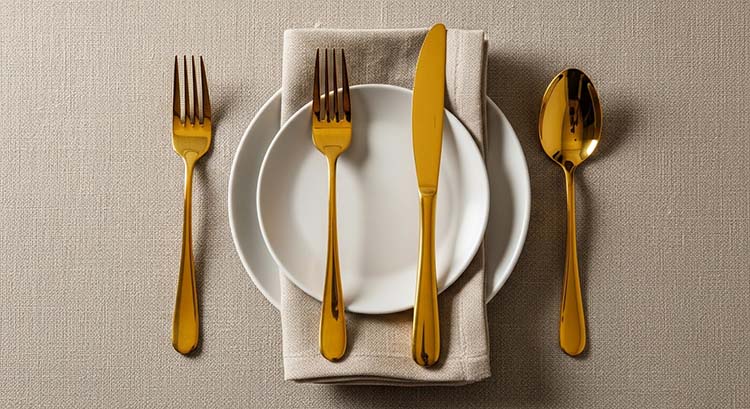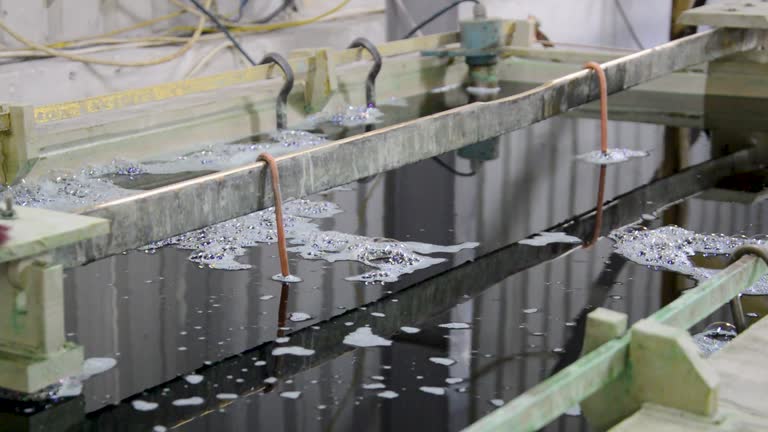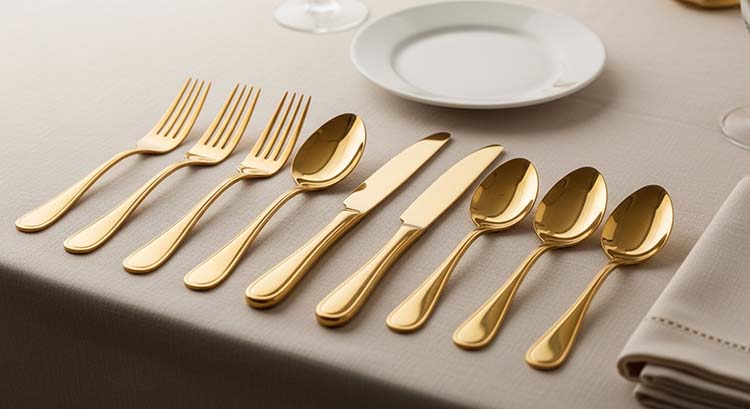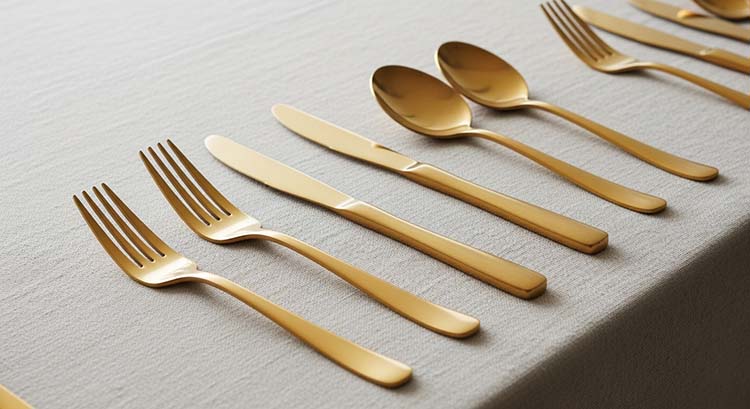What's the real difference between gold electroplate, gold-plated, and PVD gold flatware?
You love the luxurious look of gold flatware, but you're worried it will scratch, fade, or tarnish. You hesitate to invest, fearing it will look cheap after just a few uses.
The main difference is durability. PVD gold1 is a modern, super-durable finish that is dishwasher safe. Gold electroplate and gold-plated are traditional, more delicate finishes that look beautiful but require hand-washing and are best for special occasions.

I get asked about gold cutlery finishes all the time. Just last month, I was on a call with Jacky, the head of purchasing for a chain of boutique hotels. He said, "Linc, I've got three quotes for 'gold cutlery,' but the prices are all over the place. What am I actually buying?" He was smart to ask. The term "gold flatware" can describe three very different products, each with its own process, durability, and ideal use. Understanding these differences is the key to buying flatware that won't just look good on day one, but will look good for years. Let's break it down.
What Exactly Is Gold Electroplate Flatware?
You've found a beautiful set of gold electroplated flatware at a great price. You assume it's durable, but after a few runs in the dishwasher, the gold starts to fade.
Gold electroplate is a traditional method that uses an electric current to bond a thin layer of real gold to the stainless steel. It creates a stunning look affordably but is not durable enough for daily dishwasher use.

Think of electroplating as a classic technique for adding luxury. In our factory, we submerge stainless steel cutlery in a special solution containing gold particles. Then, we pass an electric current through the bath. This process causes the gold to chemically bond to the surface of the steel, creating a thin, even layer. The thickness is measured in microns, so we are talking about a very delicate coating. Because the layer is so thin and gold is a soft metal, it can be worn away by the abrasive detergents and high heat of a dishwasher. That's why I always tell my clients that electroplated flatware is fantastic for special occasions—weddings, holiday dinners, or formal banquets where you want that true gold shine. It's meant to be used lovingly and washed gently by hand.
Is 'Gold-Plated' Just Another Name for Electroplated?
You see the terms "gold electroplate" and "gold-plated" used for different products. This creates confusion, making you unsure if you are comparing two similar items or something completely different.
Yes, in the consumer market, the terms "gold-plated" and "gold electroplate" are often used to mean the same thing. Electroplating is the specific technical process, while "gold-plated" is a more general marketing term. Treat both as delicate finishes.

This common question causes a lot of headaches for buyers. As a manufacturer, "electroplating2" is the precise term we use for the electrochemical process. However, marketing departments often simplify this to "gold-plated3" because it's easier for customers to understand. Technically, "gold-plated" could refer to any process where gold is deposited onto a surface, whether chemically or mechanically, but in the flatware industry, it almost always means electroplating. The most important thing for you as a buyer is to not get too caught up in the name. Instead, you should assume that any product labeled "gold-plated" or "gold electroplate" has a thin layer of gold that requires gentle care. Always check the care instructions. If it says "hand-wash only," you know you're dealing with a traditional plated finish, regardless of the exact term on the box.
Why Is PVD the Modern Gold Standard for Flatware?
You need beautiful gold flatware for your restaurant or for everyday home use. You can’t afford to hand-wash every fork and you worry that traditional plating will wear off in weeks.
PVD is a high-tech coating process that is incredibly durable, scratch-resistant, and dishwasher-safe. It provides the look of gold with the strength needed for constant, everyday use in homes and commercial kitchens, making it a superior long-term investment.

PVD, or Physical Vapor Deposition, is a complete game-changer. This is the technology I recommended to Jacky for his hotels, and it's what I use for my own home. The process is straight out of science fiction. Inside a vacuum chamber, we take a super-hard ceramic material, like titanium nitride, and vaporize it into a plasma. This vapor then bonds to the stainless steel on a molecular level, creating a finish that is extremely thin but immensely strong. The finish is gold-colored, but its hardness is far superior to real gold. This means PVD gold flatware is resistant to scratches from daily use, won't tarnish, and is completely immune to the high heat and harsh detergents of a dishwasher. It’s the perfect solution for anyone who wants the beauty of gold without the delicate maintenance. It's built for real life.
How Do You Choose the Right Gold Finish for Your Needs?
You now understand the different types of gold finishes. But when it comes to buying, you're still stuck trying to decide which one is the right choice for your budget and lifestyle.
Match the finish to its purpose. For special occasions, affordable and beautiful gold electroplate is a great choice. For daily use, restaurants, or any high-turnover environment, the durability of PVD is the only practical and cost-effective option.

To make this decision simple for my clients, I always break it down with a simple table. Your choice depends entirely on how you plan to use the flatware.
| Feature | Gold Electroplate / Gold-Plated | PVD Gold |
|---|---|---|
| Process | Electrochemical layer of real gold | Vapor deposition of a hard ceramic |
| Durability | Moderate (scratches and fades over time) | Very High (scratch and tarnish resistant) |
| Dishwasher Safe | ❌ No | ✅ Yes |
| Cost | \$ (Affordable) | \$\$–\$\$\$ (Premium) |
| Best Use | Special occasions, gentle hand-washing | Daily use, hotels & restaurants |
If you are buying a set for holiday dinners or formal parties that you'll use a few times a year, the traditional gold electroplate offers that authentic gold warmth at an accessible price. Just be prepared to care for it. However, if you are outfitting a busy restaurant or you want to enjoy the elegance of gold flatware every single day at home, then PVD is the clear winner. The upfront cost is higher, but it's an investment that pays off. You won't be replacing it in a year, saving you money and hassle in the long run.
Conclusion
Choosing the right gold flatware means matching the technology to your needs. Electroplate offers affordable beauty for special moments, but for lasting, everyday luxury that can handle real life, PVD is a sound investment.
-
Explore this link to understand the benefits of PVD gold, its durability, and why it's a great choice for everyday use. ↩
-
Understanding electroplating can help you make informed decisions about gold-plated products and their care. ↩
-
Exploring the meaning of gold-plated can clarify its significance in product quality and maintenance. ↩
